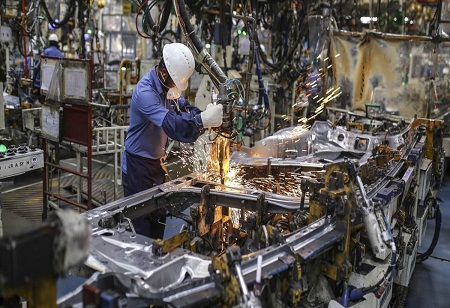For the last two years, COVID-19 has been a major setback for the industrial progress of India. Starting from labour migration to the limited supply of raw material, Covid had nearly crippled the Indian economy, with the worst effect on the
8 core industries of India. However, with the advent of 2021, many international organizations like the IMF predicted a massive rebound of India’s GDP; and an increasing amount of reports suggested a “V-shaped” recovery.
But again, the unforeseen second wave of Covid-19 shocked the economy and nearly brought it to ground zero; when for the first time in 40 years India witnessed a negative GDP growth of -23.9%. By emerging out of such an adverse environment and looking at a GDP growth of more than 8 percent, the Indian industry has proved its capability of resilience.
As this year of turmoil ends, let's explore the major challenges that core industries faced, and understand how they have overcome and flourished for a better 2022.
Impact of coal production
In 2021, coal has been a constant source for multiple speculations. In this year of transition, the nation went through the phase of power shortage, pointing to the dependency on the black diamond, to COP26 underlining why it should not be the same.
However, a report from the Ministry of Coal has turned out to be of utmost concern. As per the data, the industry is witnessing a growing gap between the demand and the domestic supply of coal. Further, the coal production in two major coal-producing states has been declining over the last three years.
In 2018-19, the actual coal demand in India was 968.36 million tonnes, while domestic supply was 733.01 million tonnes, resulting in a 235.35 million tonnes shortfall. The imbalance grew by 248.53 million tonnes in 2019-20. The actual demand for coal is estimated to be 1,142 million tonnes in 2021-22, with around 195.17 million tonnes of domestic supply available as of June 2021.
To fill this gap, Coal India Ltd (CIL) in 2021 has planned to initiate 15 new greenfield projects that will increase the capacity by 160 million tonnes per annum with an aim to achieve a yearly production capacity of 1 billion tonnes by 2023-24.
Furthermore, in order to increase coal output, CIL has launched new initiatives such as the implementation of mass production technologies in deep coal mines. In addition, the Annual Contracted Quantity (ACQ) of power plants has been increased to 100 percent of the normative requirement in circumstances where the ACQ was previously decreased to 90 percent of the normative need.
Towards renewable energy
However, coal is not the future of India. For example, right now the Indian power sector depends on coal for 64.19 percent of the total output. But, with increasing prices of coal, backed by the increasing cost of coal mining and transportation costs, coal will not be a feasible option to meet the growing demand of India.
Additionally, in 2021, the nationwide power shortage due to lack of coal stock has shown why a vast nation like India should not be totally dependent on a single source of output.
But, with numerous corporate and governmental interventions, the situation is changing at an impeccable speed.
